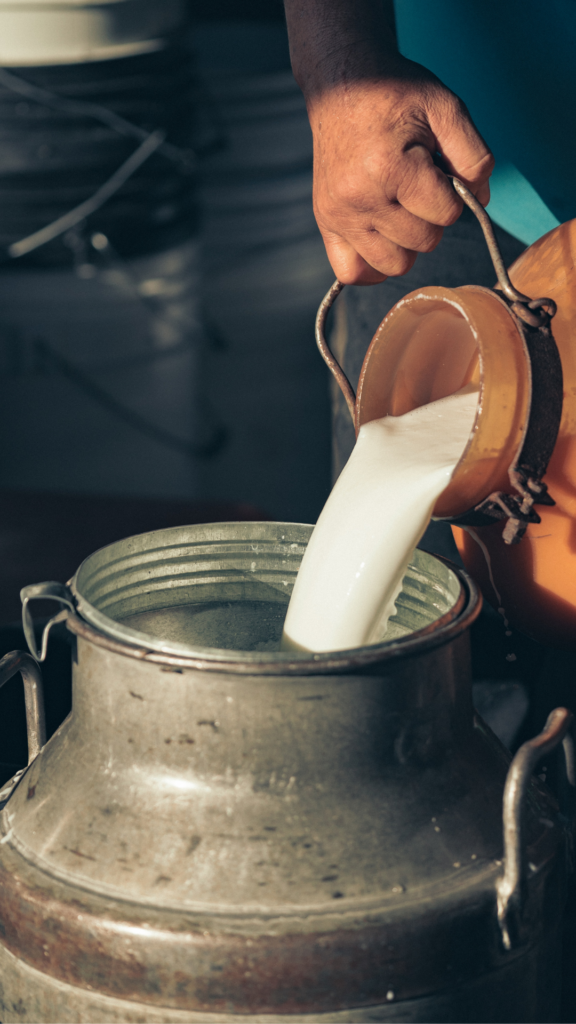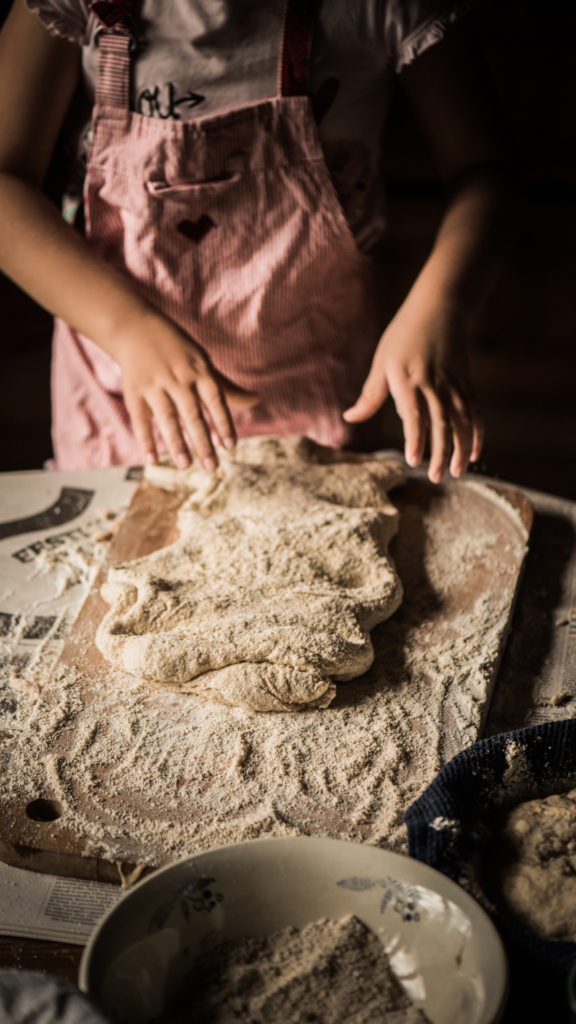Join the course
Humblebrag raclette put a bird on it blog, fam hexagon jianbing neutra godard plaid scenester.
Homesteading 101 Starter Course
Family
Free Guide
Courses & Guides
shop with me
FAVE LINKS
Low Toxic Living
Homesteading
Homemaking
Recipes
Topics
I’m a homesteader, homemaker, milkmaid, and bread baker! This is my very own slice of the internet, dedicated to inspiring you to live old fashioned in today's modern world. I’m so excited you’re here, and can’t wait to connect with you.
Does Heating Raw Milk Destroy Nutrients
When it comes to milk, there are many debates about the best way to consume it. One of the most common questions is whether heating raw milk destroys its nutritional value.
Raw milk is milk that has not been pasteurized, meaning it has not been heated to kill any bacteria or pathogens. Some people believe that raw milk is healthier because it contains more nutrients than pasteurized milk, but is this true?
To answer this question, it’s important to review the science behind heating milk.
Heat can destroy some of the nutrients in milk, such as vitamin C and thiamine. However, the amount of nutrients that are lost depends on the temperature and duration of the heating process.
Additionally, heating milk can also make some nutrients more bioavailable, meaning they are easier for your body to absorb and use. So, does heating raw milk destroy its nutrients? The answer is not a simple yes or no.
Table of Contents
Understanding Raw Milk
Raw milk is a type of dairy product that has not been pasteurized or homogenized.
This means that it has not been heated to high temperatures to kill bacteria or to break down the fat molecules in the milk. Raw milk is a popular choice for people who want to consume fresh, unprocessed foods.
Read here about how long it takes to milk a cow, like I milk my Jersey cow!
What Is Raw Milk?
Raw milk is milk that has not been pasteurized or homogenized. Pasteurization is the process of heating milk to kill bacteria and other microorganisms that may be present in the milk.
Homogenization is the process of breaking down the fat molecules in the milk to prevent them from separating and rising to the top.
Raw milk is typically sold directly from the farm or at farmers’ markets. It is important to note that raw milk can contain harmful bacteria such as E. coli, Salmonella, and Listeria.
These bacteria can cause serious illnesses, especially in young children, pregnant women, and people with weakened immune systems.

Varieties of Raw Milk
Raw milk can come from a variety of sources, including cow’s milk, goat’s milk, and sheep’s milk. Cow’s milk is the most common type of raw milk, and it is often used to make raw dairy products such as cheese, yogurt, and butter.
Human milk can also be considered a form of raw milk, although it is not typically consumed by adults. Breast milk is the primary source of nutrition for infants, and it contains a variety of nutrients and antibodies that can help protect babies from infections and illnesses.
In conclusion, raw milk is a type of dairy product that has not been pasteurized or homogenized. It can come from a variety of sources, including cow’s milk, goat’s milk, and sheep’s milk. While raw milk can contain harmful bacteria, it is a popular choice for people who want to consume fresh, unprocessed foods.
Nutritional Value of Raw Milk
Nutrients in Raw Milk
Raw milk is a rich source of nutrients, including protein, calcium, vitamin B12, vitamin D, and fat-soluble vitamins such as vitamin A, vitamin E, and vitamin K2. It also contains whey protein, which is easily digestible and has been linked to various health benefits.
One of the most significant nutritional benefits of raw milk is that it contains enzymes that aid in the digestion of lactose, making it easier for people who are lactose intolerant to consume. Raw milk also contains immune-boosting components such as immunoglobulins and lactoferrin.
Comparison with Pasteurized Milk
When milk is pasteurized, it is heated to a high temperature to kill harmful bacteria. However, this process also destroys some of the beneficial nutrients found in raw milk, such as enzymes, vitamins, and probiotics. For example, pasteurization can destroy up to 50% of vitamin C in milk.
Furthermore, pasteurized milk is often homogenized, which breaks down the fat globules and alters the structure of the milk. This can lead to the formation of oxidized cholesterol, which has been linked to heart disease.
Overall, raw milk has a higher nutritional value than pasteurized milk and can provide numerous health benefits. However, it is important to note that raw milk consumption does come with some risks, such as the potential for harmful bacteria to be present. It is recommended that individuals only consume raw milk from trusted sources and take necessary precautions to minimize the risk of illness.
Heating and Pasteurization Process
When it comes to raw milk, one of the most common questions is whether heating it destroys nutrients. Heating milk is a common practice, especially during the pasteurization process, which is used to kill harmful bacteria and extend the shelf life of milk. In this section, we will explore the heating and pasteurization process of milk.
The Role of Louis Pasteur
Louis Pasteur is credited with developing the pasteurization process in the mid-19th century. The process involves heating milk to a specific temperature for a set amount of time to kill harmful bacteria. The specific temperature and time vary depending on the type of pasteurization used.
Modern Pasteurization Methods
Today, there are several methods of pasteurization used in the dairy industry. The most common method is high-temperature short-time (HTST) pasteurization, which heats milk to 161°F (71.7°C) for 15 seconds. Another method is ultra-pasteurization, which heats milk to a higher temperature of 280°F (138°C) for a shorter time of 2 seconds.
Heating milk during the pasteurization process can have some effects on the nutrient content of milk. For example, vitamin C is sensitive to heat and can be destroyed during the heating process. However, other nutrients, such as calcium and protein, are not affected by heat.
Gentle heat treatment, such as low-temperature long-time (LTLT) pasteurization, may help preserve some of the heat-sensitive nutrients in milk. LTLT pasteurization heats milk to a lower temperature of 145°F (62.8°C) for a longer time of 30 minutes.
In conclusion, heating milk during the pasteurization process can have some effects on the nutrient content of milk. However, the benefits of pasteurization, including the reduction of harmful bacteria, outweigh the potential nutrient losses.
Impact of Heating on Nutrients
Heating raw milk is a common practice that is used to kill harmful bacteria and increase its shelf life. However, there is a concern that heating milk may destroy some of its vital nutrients. In this section, we will explore the effects of heating on different nutrients in milk.
Effect on Vitamins
Heating milk can have a significant impact on the vitamin content of milk. The two types of vitamins that are most affected by heating are water-soluble and fat-soluble vitamins. Water-soluble vitamins such as Vitamin C and B-complex vitamins are more vulnerable to heat damage than fat-soluble vitamins. On the other hand, fat-soluble vitamins such as Vitamin A, D, E, and K are less affected by heat.

Effect on Proteins
Proteins are the building blocks of milk, and they play a vital role in the nutrition of milk. Heating milk can cause the proteins to denature, which means they lose their shape and function. This can affect the digestibility and nutritional quality of milk. However, the extent of protein denaturation depends on the heating temperature and time.
Effect on Fats
Fats in milk are composed of fatty acids and fat globules. Heating milk can cause the fat globules to break down, which can affect the texture and flavor of milk. However, the fatty acids in milk are relatively stable and are not affected by heating.
In conclusion, heating milk can have both positive and negative effects on its nutrient content. While heating milk can destroy harmful bacteria and increase its shelf life, it can also cause some nutrients to degrade. The extent of nutrient degradation depends on the heating temperature and time. It is essential to strike a balance between heating milk to make it safe for consumption and preserving its nutritional value.
Health Risks and Benefits
Potential Health Benefits
Raw milk enthusiasts claim that it is more nutritious than pasteurized milk, as the heating process destroys some of the beneficial bacteria and enzymes present in raw milk. Raw milk contains beneficial bacteria that may improve digestive health, boost the immune system, and reduce the risk of allergies and asthma. Additionally, raw milk is a good source of vitamins and minerals such as calcium, potassium, and vitamin D.
However, the evidence supporting these claims is limited, and there are no scientific studies that conclusively prove that raw milk is healthier than pasteurized milk. Moreover, the potential benefits of raw milk must be weighed against the risks of consuming it.
Potential Health Risks
The consumption of raw milk carries significant health risks. Raw milk can contain harmful bacteria such as Listeria monocytogenes, Staphylococcus aureus, and Escherichia coli (E. coli O157). These bacteria can cause foodborne illnesses such as listeriosis, staphylococcal food poisoning, and hemolytic uremic syndrome (HUS).
In addition to these risks, raw milk can also transmit bovine tuberculosis and other diseases from cows to humans. People with weakened immune systems, young children, pregnant women, and the elderly are at a higher risk of developing these illnesses.
To reduce the risk of harmful germs, it is important to handle raw milk carefully and to practice good hygiene. The American Academy of Pediatrics recommends that children under the age of one should not consume raw milk or products made from raw milk.
In summary, while raw milk may contain beneficial bacteria and nutrients, it also carries significant health risks. The potential benefits of raw milk must be weighed against the risks, and it is important to handle raw milk carefully to reduce the risk of foodborne illness.
- Sourdough Vanilla Cupcakes: A Twist on the Classic Treat

- Easy Homemade Biscuits: Quick & Delicious Recipes for Beginners

- Soft Dinner Rolls: Your Guide to Fluffy, Perfect Bakes

- How to Knead Dough: A Step-by-Step Guide for Perfect Bread

- SALT & STONE Deodorant Review: A Natural Deodorant?
- Sandwich Bread Recipe: The Perfect Loaf for Your Daily Sandwiches

Raw Milk Consumption in the United States
Consumption of raw milk has been a topic of debate in the United States for many years. While some people prefer to drink raw milk because they believe it has more nutrients and health benefits than pasteurized milk, others argue that it can be dangerous due to the risk of bacterial contamination.
Legal Status
The sale of raw milk is legal in some states, but it is illegal in others. According to the U.S. Food and Drug Administration (FDA), it is illegal to sell raw milk across state lines. The FDA also recommends that people do not consume raw milk due to the risk of bacterial contamination.
Public Opinion
Public opinion on raw milk consumption is divided. Some people believe that raw milk is healthier and more nutritious than pasteurized milk, while others believe that it is dangerous and can cause serious illness. In general, people who support raw milk consumption argue that it has more beneficial bacteria and enzymes than pasteurized milk, which can help improve digestion and boost the immune system. However, opponents of raw milk consumption argue that it can contain harmful bacteria such as E. coli, Salmonella, and Listeria, which can cause serious illness and even death.
In conclusion, while some people prefer to consume raw milk due to its perceived health benefits, it is important to be aware of the risks associated with bacterial contamination. It is also important to check the legal status of raw milk in your state before consuming it.
Scientific Evidence and Recent Research
Past Studies
In the past, many scientific studies have been conducted to determine whether heating raw milk destroys nutrients. These studies have shown that heating milk can cause a reduction in the levels of certain nutrients, such as vitamin C and thiamine. However, other nutrients, such as calcium and protein, remain largely unaffected by heating.
One systematic review of past studies found that the loss of nutrients due to heating was generally small and did not significantly impact the overall nutritional value of the milk. However, it is important to note that the extent of nutrient loss can vary depending on a number of factors, including the temperature and duration of heating, as well as the type of milk being heated.
Recent Developments
Recent research has shed new light on the effects of heating raw milk on nutrient levels. For example, one recent study found that heating milk at high temperatures for a long time can lead to a significant reduction in the levels of certain vitamins and minerals, including vitamin C, thiamine, and folate.
Another study conducted by the US Food and Drug Administration (FDA) found that heating milk at lower temperatures for shorter periods of time had less of an impact on nutrient levels. However, the study also found that even mild heating can cause changes in the structure of certain proteins in milk, which can affect their digestibility.
Overall, while heating raw milk can cause some loss of nutrients, the extent of this loss can vary depending on a number of factors. Recent research suggests that heating milk at lower temperatures for shorter periods of time may help to preserve more of its nutritional value. However, more research is needed to fully understand the effects of heating on milk nutrients.

Frequently Asked Questions
Does heating milk destroy nutrients?
Heating milk can cause some loss of nutrients, but the nutritional value of milk is not significantly affected. Milk contains many nutrients, including calcium, vitamin D, and protein. These nutrients are not destroyed by heating.
What happens to the nutrients in raw milk when it’s heated?
When milk is heated, some of its nutrients begin to break down. For example, heat can cause the vitamin C in milk to degrade and become less effective. However, the nutritional value of milk is still largely intact after heating.
Is raw milk more nutritious than heated milk?
Raw milk is not necessarily more nutritious than heated milk. While some people believe that raw milk is healthier because it is not heated, there is no scientific evidence to support this claim. In fact, raw milk can be dangerous to consume because it can contain harmful bacteria.
What are the benefits of drinking raw milk?
Some people believe that raw milk is healthier because it contains more beneficial bacteria and enzymes than heated milk.
However, there is no scientific evidence to support these claims. Raw milk can also be dangerous to consume because it can contain harmful bacteria.
Here is an article on why raw milk is more beneficial to drink.
What are the risks of drinking raw milk?
Raw milk can contain harmful bacteria, such as E. coli, Salmonella, and Listeria. These bacteria can cause serious illness, especially in children, the elderly, and people with weakened immune systems. Drinking raw milk can also increase the risk of foodborne illness.
What is the nutritional difference between raw milk and pasteurized milk?
Raw milk and pasteurized milk have similar nutritional profiles. However, pasteurized milk is safer to consume because it has been heated to kill harmful bacteria. Pasteurization does not significantly affect the nutritional value of milk.
Explore Reader
SHOP
Fitbit Versa 2 Health & Fitness Smartwatch
SHOP
Bamboo Nesting storage boxes
SHOP
Ilia Super Serum Skin Tint SPF 40
SHOP
Ninja Max XL Electric Air FryeR
SHOP
Cuisinart 15-Piece Knife Set with Block
SHOP
Muse Bath Apothecary Hand Ritual
SHOP
Martha Stewart 100% Cotton Bath Towels
SHOP
Eozlink Fluffy Fur Slides
Leave a Reply Cancel reply
Watch me clean my home







Be the first to comment